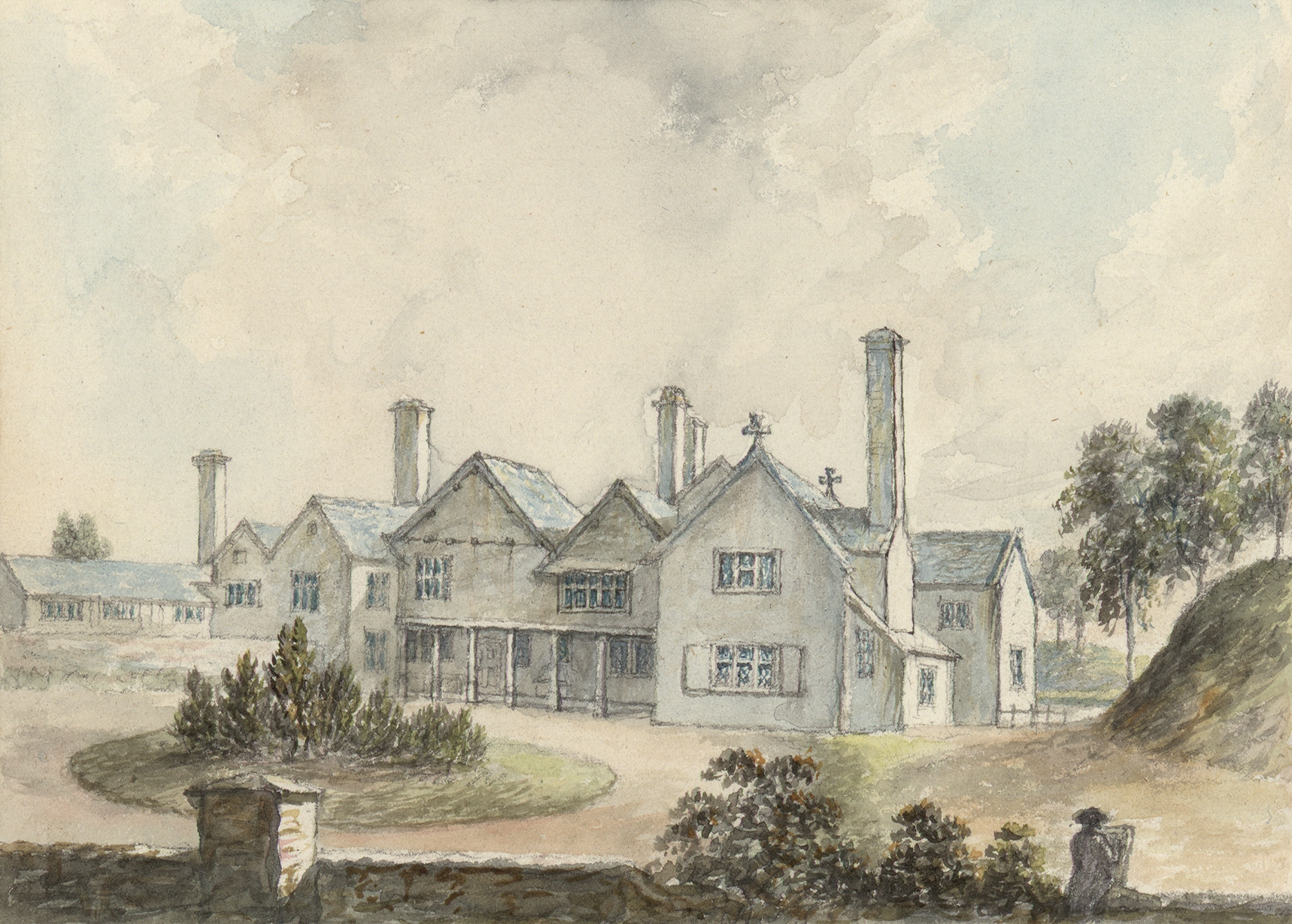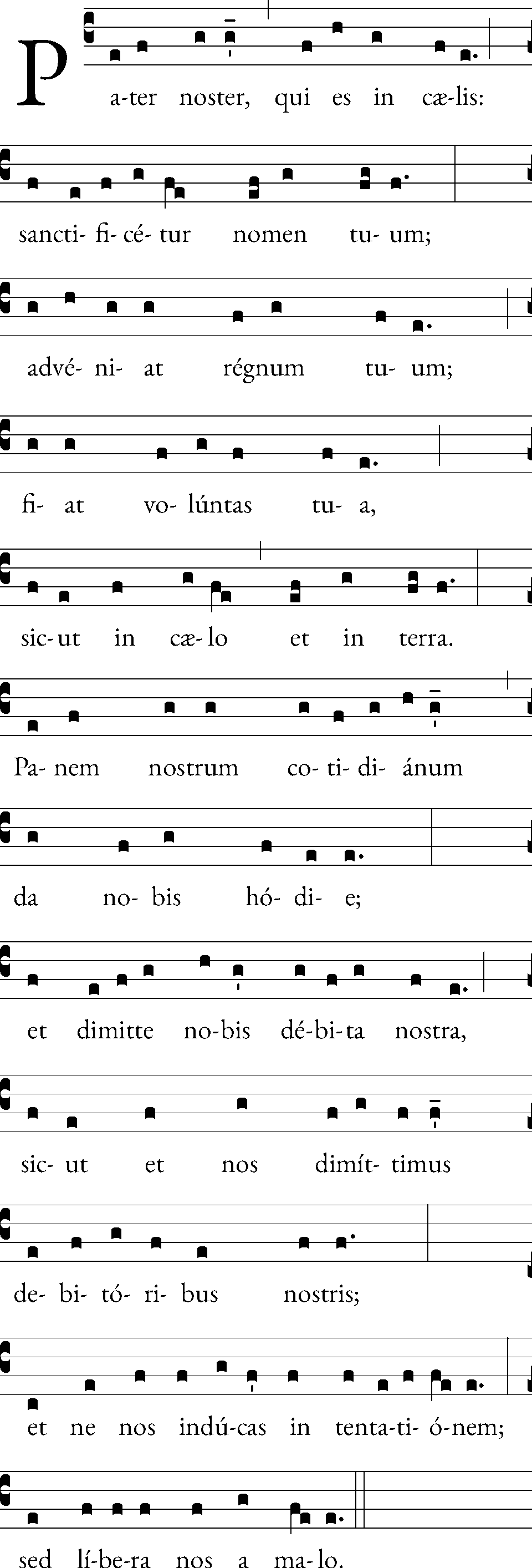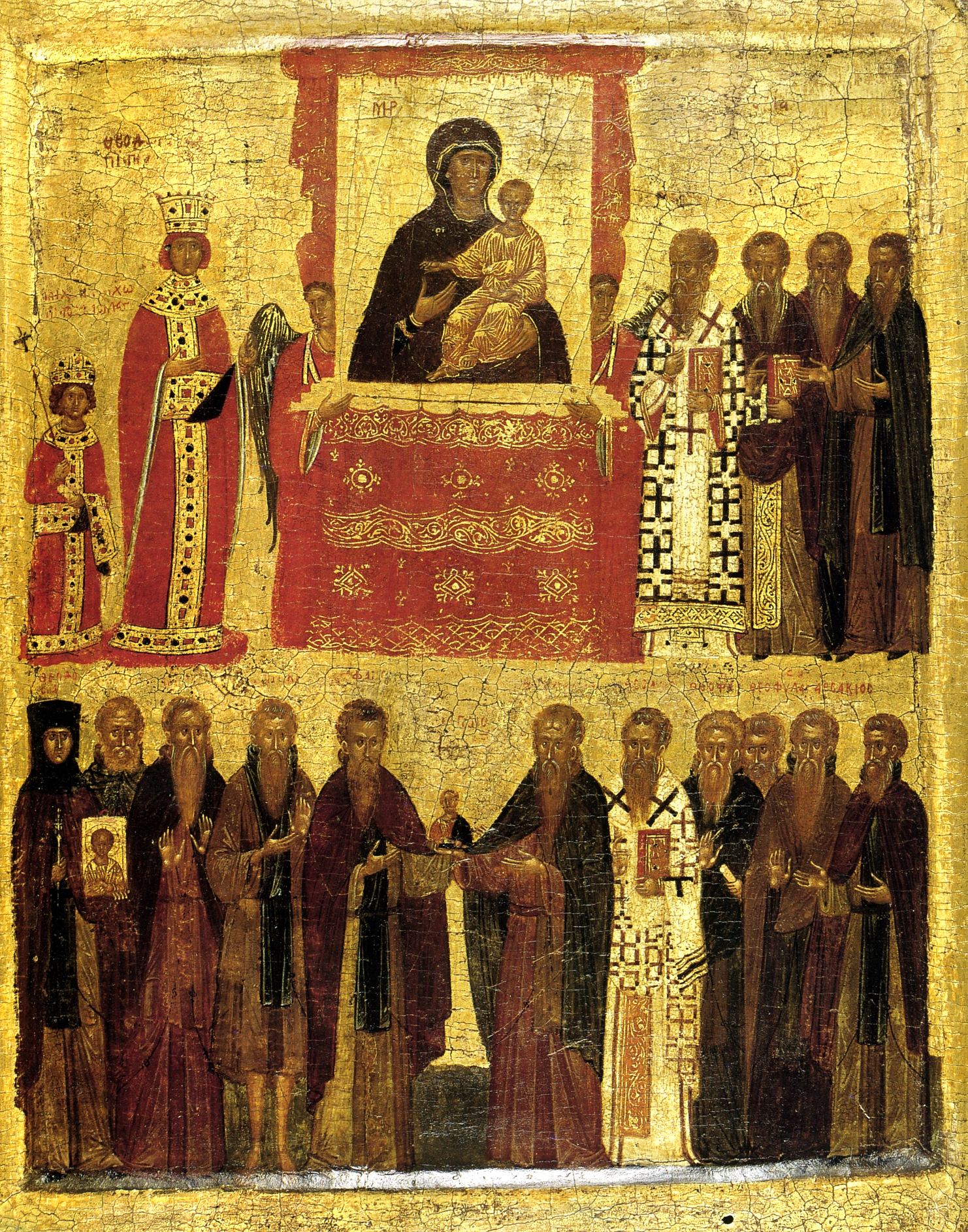|
Llangar Old Parish Church
Llangar Church, or All Saints Old Parish Church, Llangar, was formerly the parish church of Llangar with Cynwyd, in the Dee Valley, Denbighshire, North Wales. It is now under the guardianship of Cadw, is a Scheduled Monument, and a grade I Listed Building. It is conserved and open to the public as an example of a rural church with medieval wall paintings and largely intact 18th century interior fittings. History Documentary sources show a church at Llangar in 1291, but the present building would appear to date to the 15th century (1971 excavations within the church found this to be the earliest identifiable occupancy). The Church has an undivided nave and chancel, flagstone floor, and Timber roof truss#Arch-braced truss, arch-braced roof with 15th century roof trusses. The walls have wall paintings, which probably represent at least 8 different layers of painted schemes. The earliest of these date to the 15th century. The extensive woodwork of the interior includes a gallery, box ... [...More Info...] [...Related Items...] OR: [Wikipedia] [Google] [Baidu] |
Llangar
Llangar is a former civil parish in Denbighshire in Wales, south west of Corwen, its post town, and north east of Bala. It is situated at the confluence of the rivers Alwen and Dee, and includes the small hamlets of Bryn, Cymer, and Gwynodl. A large portion of the parish is barren. The small village stands on the road from Corwen, by the Vale of Edeyrnion. The Dee is crossed by a bridge about away at Cynwyd. It lies in the ''bro'' and former cwmwd of Edeirnion. Llangar Church is a remote rural church that was abandoned in 1856, but survived to become a Cadw guardianship building. The interior features 14th and 15th century wall paintings. It is now protected as a Grade 1 listed building In the United Kingdom, a listed building is a structure of particular architectural or historic interest deserving of special protection. Such buildings are placed on one of the four statutory lists maintained by Historic England in England, Hi ..., and open to the public for ... [...More Info...] [...Related Items...] OR: [Wikipedia] [Google] [Baidu] |
Works Of Mercy
Works of mercy (sometimes known as acts of mercy) are practices considered meritorious in Christian ethics. The practice is popular in the Catholic Church as an act of both penance and charity. In addition, the Methodist church teaches that the works of mercy are a means of grace that evidence holiness of heart (entire sanctification). The works of mercy have been traditionally divided into two categories, each with seven elements: # "Corporal works of mercy" which concern the material and physical needs of others. # "Spiritual works of mercy" which concern the spiritual needs of others. Pope John Paul II issued a papal encyclical on 30 November 1980, declaring that "Jesus Christ taught that man not only receives and experiences the mercy of God, but that he is also called upon 'to practice mercy' towards others." [...More Info...] [...Related Items...] OR: [Wikipedia] [Google] [Baidu] |
List Of Scheduled Monuments In Denbighshire
The county of Denbighshire is in north-east Wales, occupying the Vale of Clwyd and the uplands to the west, east and south. There are 168 scheduled monuments in the county. The oldest is from 225,000 years ago, the oldest inhabited site in Wales. A further three limestone cave systems also have Paleolithic deposits. Three chambered tombs date to the Neolithic. The moorlands in particular are home to many of the 100 Bronze Age and Iron Age, the vast majority of which are burial mounds. There are some 21 hill forts and other enclosure sites, and several stone circles. There are only three sites from the Roman period, and none dating to Early Medieval times. From the Medieval period itself on the other hand, there are 40 sites, including castles, town walls, chapels, crosses, domestic buildings, defensive buildings, bridges and monastic sites. There are 18 post-medieval sites, being a very diverse mix of site types and dates. Most notable is the World Heritage Site at Pontcysyllte Aque ... [...More Info...] [...Related Items...] OR: [Wikipedia] [Google] [Baidu] |
List Of Cadw Properties
Cadw is the historic environment service of the Welsh Government which manages historical buildings and ancient monuments in Wales. Location map See also *List of National Trust properties in Wales Below is a list of the stately homes, historic houses, castles, abbeys, museums, estates, coastline and open country in the care of the National Trust in Wales, grouped into the unitary authority areas. Many areas of land owned by the trust, both ... * Lists of scheduled monuments in Wales References {{Tourism in Wales * * Cadw (Welsh Heritage) Properties ... [...More Info...] [...Related Items...] OR: [Wikipedia] [Google] [Baidu] |
Grade I Listed Buildings In Denbighshire
In the United Kingdom, the term listed building refers to a building or other structure officially designated as being of special architectural, historical, or cultural significance; Grade I structures are those considered to be "buildings of exceptional interest". Listing was begun by a provision in the Town and Country Planning Act 1947. Once listed, strict limitations are imposed on the modifications allowed to a building's structure or fittings. In Wales, the authority for listing under the Planning (Listed Buildings and Conservation Areas) Act 1990 rests with Cadw. Buildings See also * Grade II* listed buildings in Denbighshire * Listed buildings in Wales Notes References External links {{Use dmy dates, date=April 2017 Grade I listed buildings in Denbighshire, Lists of listed buildings in Denbighshire, I Lists of Grade I listed buildings in Wales ... [...More Info...] [...Related Items...] OR: [Wikipedia] [Google] [Baidu] |
Rug Chapel
Rhug (normally Y Rug in Welsh; sometimes given the antiquarian spelling Rûg) is a township in the parish of Corwen, Denbighshire, Wales, formerly in the old cantref of Edernion, Edeirnion and later a part of Merionethshire, two miles from CorwenRug Chapel and ten miles north east of Bala, Gwynedd, Bala. It includes the hamlet of Bonwen. It is situated near the River Dee, Wales, River Dee, under Berwyn range. About 1150, it was ruled by the ''Maer Du'' or "Black Mayor of Rhug" and later became part of the lands of the Baron of Cymmer-yn-Edeirnion, barons of Edeirnion (see Hughes of Gwerclas) who ruled from Gwerclas Castle. History The Lordship of Rhug contained the townships of Aber Alwen in the ecclesiastical parish of Corwen, which is where the manor house of Rhug was situated. It was apparently at Rhug that King Gruffudd ap Cynan was staying when he was betrayed by Meirion Goch of Llŷn, in 1080. Hugh Lupus, Earl of Chester and Hugh, Earl of Salop, hearing that the prince was ... [...More Info...] [...Related Items...] OR: [Wikipedia] [Google] [Baidu] |
Church In Wales
The Church in Wales () is an Anglican church in Wales, composed of six dioceses. The Archbishop of Wales does not have a fixed archiepiscopal see, but serves concurrently as one of the six diocesan bishops. The position is currently held by Andy John, Bishop of Bangor, since 2021. Unlike the Church of England, the Church in Wales is not an established church. Disestablishment took place in 1920 under the Welsh Church Act 1914. As a province of the Anglican Communion, the Church in Wales recognises the Archbishop of Canterbury as a focus of unity, but without any formal authority. A cleric of the Church in Wales can be appointed to posts in the Church of England, including the See of Canterbury; a former Archbishop of Canterbury, Rowan Williams, was from Wales and served as Archbishop of Wales before his appointment to Canterbury. Official name The Church in Wales () adopted its name by accident. The Welsh Church Act 1914 referred throughout to "the Church ''in'' ... [...More Info...] [...Related Items...] OR: [Wikipedia] [Google] [Baidu] |
Lord's Prayer
The Lord's Prayer, also known by its incipit Our Father (, ), is a central Christian prayer attributed to Jesus. It contains petitions to God focused on God’s holiness, will, and kingdom, as well as human needs, with variations across manuscripts and Christian traditions. Two versions of this prayer are recorded in the gospels: a longer form within the Sermon on the Mount in the Gospel of Matthew, and a shorter form in the Gospel of Luke when "one of his disciples said to him, 'Lord, teach us to pray, as John taught his disciples. Scholars generally agree that the differences between the Matthaean and Lucan versions of the Lord’s Prayer reflect independent developments from a common source. The first-century text '' Didache'' (at chapter VIII) reports a version closely resembling that of Matthew and the modern prayer. It ends with the Minor Doxology. Theologians broadly view the Lord’s Prayer as a model that aligns the soul with God’s will, emphasizing praise, tr ... [...More Info...] [...Related Items...] OR: [Wikipedia] [Google] [Baidu] |
Personifications Of Death
Personifications of death are found in many religions and mythologies. In more modern stories, a character known as the Grim Reaper (usually depicted as a berobed skeleton wielding a scythe) causes the victim's death by coming to collect that person's soul. Other beliefs hold that the spectre of death is only a psychopomp, a benevolent figure who serves to gently sever the last ties between the soul and the body, and to guide the deceased to the afterlife, without having any control over when or how the victim dies. Death is most often personified in male form, although in certain cultures death is perceived as female (for instance, Marzanna in Slavic mythology, or Santa Muerte in Mexico). Death is also portrayed as one of the Four Horsemen of the Apocalypse. Most claims of its appearance occur in states of Near-death experience, near-death. By region Americas Latin America As is the case in many Romance languages (including French, Portuguese, Italian, and Romanian), the Spanish ... [...More Info...] [...Related Items...] OR: [Wikipedia] [Google] [Baidu] |
Iconoclasm
Iconoclasm ()From . ''Iconoclasm'' may also be considered as a back-formation from ''iconoclast'' (Greek: εἰκοκλάστης). The corresponding Greek word for iconoclasm is εἰκονοκλασία, ''eikonoklasia''. is the social belief in the importance of the destruction of icons and other images or monuments, most frequently for religious or political reasons. People who engage in or support iconoclasm are called iconoclasts, a term that has come to be figuratively applied to any individual who challenges "cherished beliefs or venerated institutions on the grounds that they are erroneous or pernicious." Conversely, one who reveres or venerates religious images is called (by iconoclasts) an ''Iconolatry, iconolater''; in a Byzantine context, such a person is called an ''iconodule'' or ''iconophile.'' Iconoclasm does not generally encompass the destruction of the images of a specific ruler after their death or overthrow, a practice better known as ''damnatio memoriae'' ... [...More Info...] [...Related Items...] OR: [Wikipedia] [Google] [Baidu] |





